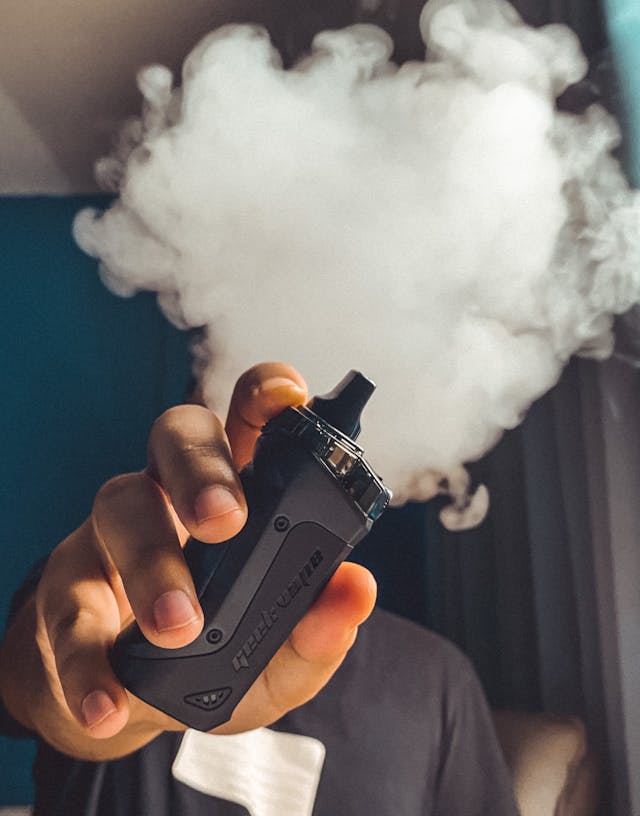Vaping devices have rapidly established a strong presence in both youth and adult social circles worldwide. Marketed as a sleek, technologically advanced way to consume nicotine or flavors, vapes appeal not just for their practicality but also for the sense of novelty they provide. Young adults are especially drawn to brightly colored pods, compact designs, and an ever-growing menu of flavors—from sweet and fruity to dessert-inspired options. This trend is further fueled by targeted social media campaigns, sleek packaging, and word-of-mouth hype. As a result, many individuals feel enticed to try vaping, viewing it as a safer, cleaner alternative to cigarette smoking.
However, amid this enthusiasm, important health questions are sometimes overlooked. Many consumers, particularly those new to nicotine use, wonder: Are e-cigarettes safe? The term “safe” is often loosely used in pop culture and product marketing when discussing vaping. Yet, the reality is more complex. Research has revealed that while vaping usually exposes users to fewer toxic substances than traditional tobacco products do, it presents its own set of health risks. These dangers are only beginning to be fully understood, so the assumption that vaping is entirely risk-free is unfounded.
Contents
What’s Sally In Vape Aerosols?
Unlike the familiar scent of burning tobacco, vape devices produce an odorless or sweet-smelling mist by heating a liquid, commonly known as e-liquid or vape juice. This liquid contains a combination of well-known components, including nicotine, flavorings, propylene glycol, and vegetable glycerin. However, the ingredient list rarely ends there. Scientific reviews and laboratory analyses have found that e-liquids can harbor a range of hidden dangers. Small metal particles from device heating coils—such as nickel, tin, and lead—may be carried in the aerosol straight into the lungs. These metals have been implicated in respiratory and nervous system issues.
Perhaps even more concerning is the unpredictable chemical makeup of vape products themselves. According to findings from the Centers for Disease Control and Prevention (CDC), products advertised as “nicotine-free” sometimes actually contain nicotine or harmful contaminants, such as volatile organic compounds. Other flavor additives, meant to enhance the sensory experience of vaping, can turn into toxic byproducts like formaldehyde when heated. This chemical variability makes it nearly impossible for consumers to understand what they are inhaling with every puff fully.
Short-Term And Long-Term Health Consequences
Early on, many people saw vaping as a potential solution for smokers determined to quit. But recent medical cases and research highlight real short- and long-term risks. In 2019, hospitals across the United States treated an influx of patients suffering from EVALI (e-cigarette or vaping use-associated lung injury), a severe and sometimes fatal respiratory condition. Symptoms included extreme shortness of breath, persistent cough, fever, chest pain, and gastrointestinal distress. Most distressingly, several young adults and teens were affected, underscoring the vulnerability of the youngest users.
Beyond these acute incidents, studies are beginning to track the ongoing effects of routine vaping. Bronchitis, wheezing, and increased asthma symptoms now appear more common among young vapers. Meanwhile, researchers are observing a disturbing connection between vaping and cardiovascular risks. People who regularly vape seem to have elevated risks of stroke and heart attack, risks observed even among those with no history of tobacco use. While much remains to be discovered, the arc of evidence is trending toward caution: vaping may substitute some toxic cigarette ingredients for others, but it does not erase health dangers.
Vaping And The Adolescent Brain
Adolescents are more susceptible than adults to the captivating pull of vaping. The wide array of flavors, the discreet devices, and the portrayal of vaping as “cool” dovetail with developmental tendencies for risk-taking and curiosity among teens. Yet, youths who vape—even those using nicotine-free products—put their still-developing brains at risk. Nicotine exposure in adolescence has long been linked to changes in how brain circuits are formed, impacting learning, impulse control, and emotional development.
Even more worrisome are insights from NIH research, which suggest a strong association between vaping and the subsequent use of combustible cigarettes. Teens who start by vaping are several times more likely to transition to regular smoking later in life than those who never vaped. These findings point to vaping as a potential “gateway” to broader nicotine addiction and even other substance use, an outcome contrary to what many youth, parents, and educators assume.
Regulation And Labeling Gaps
With such rapid innovation and product turnover in the vaping industry, government oversight has lagged dangerously behind. Unlike tobacco cigarettes, subject to extensive regulation, ingredient monitoring, and warning labels, vape products have often skirted these checks due to legal loopholes and the pace of market evolution. It means consumers face huge inconsistencies from one product to the next. Some products may have understated or overstated nicotine levels, omit the listing of harmful additives, or even vary by jurisdiction due to patchwork regulations.
Global responses to these challenges differ widely. Some countries have placed blanket bans on flavored vapes, while others do little to regulate e-cigarette marketing or distribution. This patchwork regulatory landscape confuses buyers, making personal research and a wary attitude essential for anyone purchasing vape products. Until clear and consistent rules are universal, users must often judge safety based on incomplete or unreliable product information.

Making Informed Choices
In a world where new vape devices and flavors seem to emerge daily, staying informed about risks has never been more important. The reality is that “less harm” does not equate to “harmless.” Although vaping has sometimes been promoted as a tool for quitting smoking, there are safer, evidence-based ways to stop nicotine use. The health profile of vaping is still being actively studied. To look after your health or the health of your loved ones, it is crucial to investigate, question, and listen to emerging research rather than relying on marketing promises.
- Always read product labels carefully, and be wary of ambiguous safety claims or incomplete ingredient lists.
- If you have questions about the risks or your health, consult with healthcare providers who can offer a perspective based on current research.
- Watch for new findings in trusted news sources and scientific literature to stay updated as research into vaping continues to evolve.
- If you or someone you know is tempted by the social or emotional appeal of vaping—especially among young people—discuss the realities and concerns openly.
The best health decisions are grounded in fact, not hype. Weighing the known and potential risks of vaping, especially when the full range of effects may not emerge for years, is an essential step in making choices that protect your future health and well-being.







